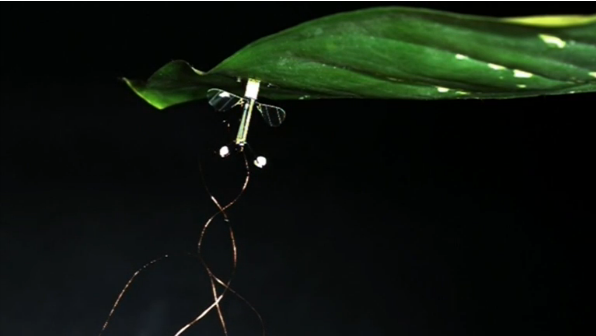
MASSACHUSETTS, United States (Reuters) — Harvard’s RoboBees have been upgraded. The tiny robots, the smallest flying drones ever developed, are now capable of perching like a bat to save energy, according to its makers at the Harvard John A. Paulson School of Engineering and Applied Sciences (SEAS) and the Wyss Institute for Biologically Inspired Engineering at Harvard University.
The team used electrostatic adhesion, the same basic science that causes a balloon to stick to a wall, to give their microbots a rest during flight.
When you rub a balloon it becomes negatively charged. If the charged balloon is brought close to a wall, its negative charge forces some of the wall’s electrons away, leaving the surface positively charged. The attraction between opposite charges then causes the balloon to stick to the wall. The RoboBee applies a small amount of energy to create and maintain the same attraction.
The robot was fitted with an electrode patch and a foam mount that absorbs shock to perch on surfaces and conserve energy in flight.
The new perching components weigh 13.4 mg, bringing the total weight of the robot to about 100mg – similar to the weight of a real bee. The robot takes off and flies normally. When the electrode patch is supplied with a charge, it can stick to almost any surface, from glass to wood to a leaf. To detach, the power supply is simply switched off.
The patch requires about 1000 times less power to perch than it does to hover, offering to dramatically extend the operational life of the robot.
The upgrade brings the ultimate goal of swarms of tiny drones that could be used in military surveillance or search and rescue operations one step closer to reality.
The research was funded by the National Science Foundation, the Wyss Institute for Biologically Inspired Engineering, and the Swiss Study Foundation.








